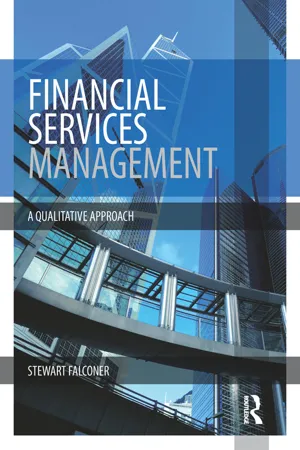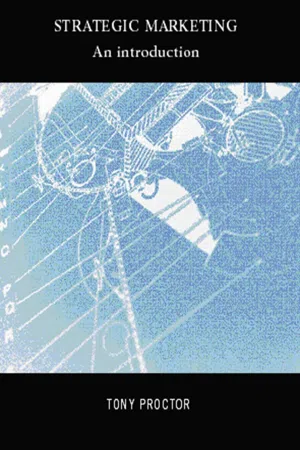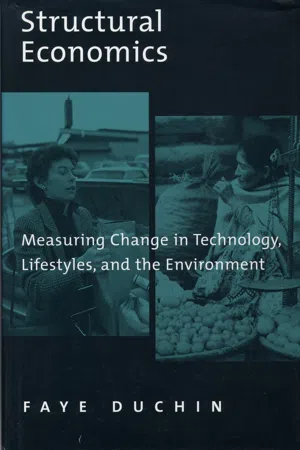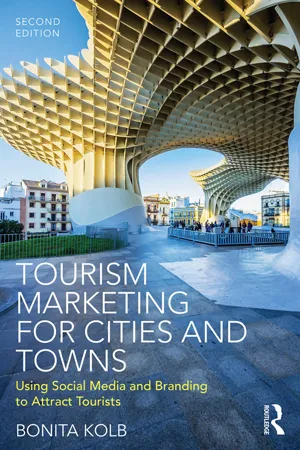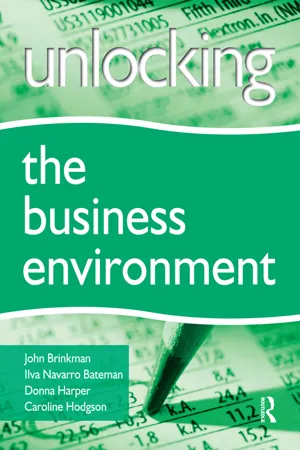Business
Lifestyle and Technological Environment
Lifestyle and technological environment refers to the societal and cultural factors that influence consumer behavior and preferences, as well as the impact of technology on these aspects. It encompasses trends, habits, and attitudes of individuals, as well as the technological advancements that shape their daily lives. Understanding these factors is crucial for businesses to tailor their products and services to meet consumer needs and stay competitive in the market.
Written by Perlego with AI-assistance
Related key terms
Related key terms
1 of 4
Related key terms
1 of 3
6 Key excerpts on "Lifestyle and Technological Environment"
- eBook - ePub
Financial Services Management
A Qualitative Approach
- Stewart Falconer(Author)
- 2014(Publication Date)
- Routledge(Publisher)
Fortunately, many organizations within the financial services sector have recognized these changes and have responded to them in a variety of ways. They offer more choice and better service, and technology has helped with this, particularly through the use of the internet to provide ready access to products and services and to information about these products and services in a way that is convenient and available where and when it suits the customer. It is important to emphasize though that the social environment is not static and, if anything, it is likely that attitudes and expectations will continue to change at an accelerating rate rather than there being any chance of the pace of change slowing down. This serves to emphasize again how important it is that business managers understand the influences of the external, contextual environment and do everything to anticipate changes and respond to them effectively.Technological environment
Technology affects us all in many different ways, both at work and outside work, but, for the purpose of this section, I will look at how it impacts on people in the workplace. More specifically, I will consider how it affects individual employees and how it affects the managers who have to deal with the implementational impact of technological change in the workplace. We will cover not so much what the technology does or what clever production and information processes have been developed, but rather what it means for business management. How technology makes it harder and how it makes it easier, and what managers have to think about and do in response to the impact and influence of the technological environment. Having adopted that approach in this chapter, I will look at how the technology is actually used within the financial services sector when I deal with the topic of information technology in Chapter 11 .Starting simplistically, technological change creates new products, new materials and new production systems, and it has an enormous effect on the business environment through the way it can help companies to become more competitive in terms of the products and services they offer and the costs/overheads they incur. We have already noted just how effective that has been within the financial services sector in enabling organizations to cope successfully with the very competitive business environment. In fact, the level of technology in a society or a particular industry can determine to a large extent what products and services will be produced, what equipment will be used and how operations will be managed. It is very influential indeed. Technological development has been an ongoing feature of industrialized society, obviously, but perhaps more than at any time in history, the last 30 years have seen the innovators progress and profit, while those who have not been prepared or able to take advantage of new technology have just not survived. It has been put quite succinctly in saying that ‘the history of industrialisation and capitalist development is largely the history of technological change’.4 - eBook - ePub
Strategic Marketing
An Introduction
- Tony Proctor(Author)
- 2002(Publication Date)
- Routledge(Publisher)
Organizations need to respond and adapt to changing environmental conditions if they intend to survive. They can even instigate changes in the environment which are in their own interests. Both demand an understanding of those factors and forces which bring about change in the environment. Ideally, an organization should adapt to changes as they occur, even anticipate them in advance or systematically instigate changes to its own advantage. An inability to do so can put organizations in positions where their shor t- and long-term survival is jeopardized. The business environment is the setting within which a business operates, formulates policies and makes decisions. It is usual to distinguish between the inter nal and the exter nal environment. The for mer usually comprises the various assets and resources possessed by the organization. That is its workforce, plant and machiner y, know- how, financial resources, etc. The latter refer s to people, institutions and developments, etc. which exer t an external influence on how the organization performs. Of course, with the emergence of strategic alliances and networks such a definition of boundaries does tend to become more blurred.Firms need to know all about the business environment in which they operate. It is essential that they can anticipate the changes that are likely to take place in the marketing environment in the foreseeable future. However, as noted above, it is not simply a matter of adapting to change. Organizations can also exercise their own influence on the environment. Among the ways that this can be achieved is the development and commercialization of new technological ideas. These new technologies then become par t of the business environment and in their turn have an impact upon what other organizations can do.Considerable control can be exercised over its internal environment by a firm, but a firm cannot exert control in the same way or to the same extent over the external environment. It can only attempt to influence it. There are various ways of influencing events in the external environment. These may include activities such as lobbying among leg islative g roups. The latter is what organizations often do when tr ying to influence the for mulation of European Community directives which can have an impact on such things as product design safety standards, etc. - eBook - ePub
Structural Economics
Measuring Change in Technology, Lifestyles, and the Environment
- Faye Duchin(Author)
- 2013(Publication Date)
- Island Press(Publisher)
Technology and technological change can be described in terms of methods for the extraction of fuels, materials, and biomass and their transformation into useful products and wastes. A number of studies of technological change were described in chapter 2, and the economics literature is full of many other examples. Lifestyle has been subjected to far less systematic investigation than technology, and the classification of households as a necessary prelude to the description of their lifestyles is explored here in some detail. A concrete way to effectively incorporate lifestyles into models of economic systems is described, and some new ideas about the representation of household activities are offered. The final section considers the content of specific scenarios.Lifestyle and Technology As Organizing Concepts
Ehrlich and Holdren (1974) identified the main factors responsible for environmental degradation as population increase, affluence, and technology, providing three potentially important “handles” for operationalizing the concept of sustainable development. Overpopulation and overconsumption have both been identified as chief culprits. Indeed, world population is still growing, and many people in all societies aspire to American consumption patterns and copy them as soon as their means permit. Democratic governments could not deliver on international agreements limiting fertility or consumption, as these are the results of personal decisions made in specific cultural contexts. Only households are in a position to act on alternative lifestyle objectives. An immediate challenge, then, is to understand the considerations of households in making such decisions.Economists are experts about decisions regarding prices and quantities of items whose production and sale is mediated by market mechanisms. Their purview extends to roles for governments, not only in fiscal and monetary matters but also in regulating private-sector activities and providing certain kinds of social services. But households, the locus where most decisions about work, consumption, fertility, health care, and education are made, and where ethical values and civic attitudes are formed, have been largely ignored because of the economist’s emphasis on people only as individuals and individuals only as consumers. By shifting the focus of description and analysis from individual consumers to communities of households, we can examine the lifestyle choices, including but not limited to consumption behavior and fertility, that characterize each of them. - eBook - ePub
Tourism Marketing for Cities and Towns
Using Social Media and Branding to Attract Tourists
- Bonita Kolb(Author)
- 2017(Publication Date)
- Routledge(Publisher)
- The first step in environmental scanning is to analyze the internal environment. With tourism as the product, the internal environment would be the community and tourism service providers. The best way to access information is through interviews with local stakeholders. They will have knowledge of the current state of tourism in the area. They will also be able to answer questions as to the type of traveler currently visiting and also what benefits they desire from the trip.
- Information on the external environment can be obtained from many existing sources such as databases, professional associations, and publications. Economic conditions will affect whether people have the disposable income available to travel. Even if they do, bad economic news can make people feel insecure about the future, resulting in them saving rather than spending money. Technology has changed how people consume and purchase products. The use of apps during travel has resulted in travelers that plan last minute and continue to adjust their trip while traveling. Messaging services allow travelers to communicate easily and directly with tourism service providers so that they can personalize the experience.
- Changes in the demographic environment can provide opportunities to target new segments of travelers. However, to do so the city may need to adjust its product, promotional message, or both. The socio-cultural environment, which consists of values, attitudes, and lifestyles, can affect destination choice. Values can involve a desire to experience a different style of life. The attitude toward travel, whether it is an indulgence or necessity, will also affect the travel decision. The lifestyle of the traveler will determine their self-identity and therefore what activities they desire on the trip
Rationale for environmental scanning
The environment that affects marketing can be divided into the internal, or local, environment and the external environment. In the internal environment it is necessary to understand the current state of the tourism industry both locally and regionally. This would include who is traveling, with whom they are traveling, and in what tourism activities they wish to engage. For example, to understand local trends existing visitor data can be analyzed. In addition, people involved in the tourism industry can be interviewed. The information obtained will show the strengths and weaknesses of the local tourism sector - eBook - ePub
- Alasdair Blair, David Hitchcock(Authors)
- 2004(Publication Date)
- Routledge(Publisher)
1: Environment and business: the nature of the relationships
- The basic elements—business, environment and environmentalism
- Impact of business on the environment
- The environment influencing business
- Business cultures and ethics
- The globalization of business
- Environmental and political standpoints
Simple answers rarely suffice for complex problems; environmental and natural resources problems are not an exception. (Tom Tietenberg, 2000)The environment is in the process of becoming a major new competitive area for business. Understanding the impact of the relevant issues and responding to the resulting opportunities and threats will become an important source of competitive advantage. (Elkington and Burke, 1987)One of the main aims of this first chapter is to familiarize the reader with the relationships which are to be explored in this book. The relationships in themselves are relatively straightforward. First, business activities have an impact on the environment. This occurs through pollution, the modification of ecosystems, introducing exotic species and chemical compounds, genetic engineering and irreversible physical changes—the sorts of impacts widely reported in the popular press and television. The ways in which land has been used, particularly for agriculture and forestry, are a reflection of the way in which the commercial pressures of business have changed the physical landscape. Business affects the environment in a variety of ways both deliberate and accidental. Most of the effects are usually seen as detrimental, although increasingly we see some business activity improving the environment. For example, a number of museums and country houses have been opened to the public where the restoration of former days of glory have halted decades of decline and reinstated previous, albeit not entirely natural, surroundings. However, many firms who claim to be improving the environment are in reality only mitigating against the most injurious impacts of what is occurring. Hence the practice of planting trees and landscaping around industrial plants is not improving the environment but merely reducing the detrimental effects of building the plant in the first place. - eBook - ePub
- John Brinkman(Author)
- 2014(Publication Date)
- Routledge(Publisher)
12 The Macro Environment – Technological Influences‘Information technology and business are becoming inextricably interwoven. I don’t think anybody can talk meaningfully about one without talking about the other.‘ Bill Gates (1999)Chapter Outline12.1 Introduction12.2 What do we mean by the term ‘technology’?12.3 Key technological influences12.4 Emerging ethical and international issues around the technological environment12.5 Analysing the effect of current and future key technological influences on organisations12.6 SummaryChapter Objectives After carefully reading and engaging with the tasks and activities outlined in this chapter, you should have a better understanding of:•the term ‘technology’•key aspects of technological development•the nature of the technological influences and their impact on organisations•some of the ethical and international issues confronting organisations with regard to technology.12.1 IntroductionThe quotation at the beginning of the chapter refers to the way in which information technology (IT) and business are now linked. ICT facilitates easy and fast communication between organisations, their customers, employees, suppliers and other stakeholders. The internet allows us to access products and services offered by organisations ’24/7’. However, it is not just businesses, but all organisations, such as the public sector and charities that have had their processes affected by IT. In the developed economies, new processes and products have evolved as a direct result of the use of IT.
Index pages curate the most relevant extracts from our library of academic textbooks. They’ve been created using an in-house natural language model (NLM), each adding context and meaning to key research topics.
Explore more topic indexes
Explore more topic indexes
1 of 6
Explore more topic indexes
1 of 4
